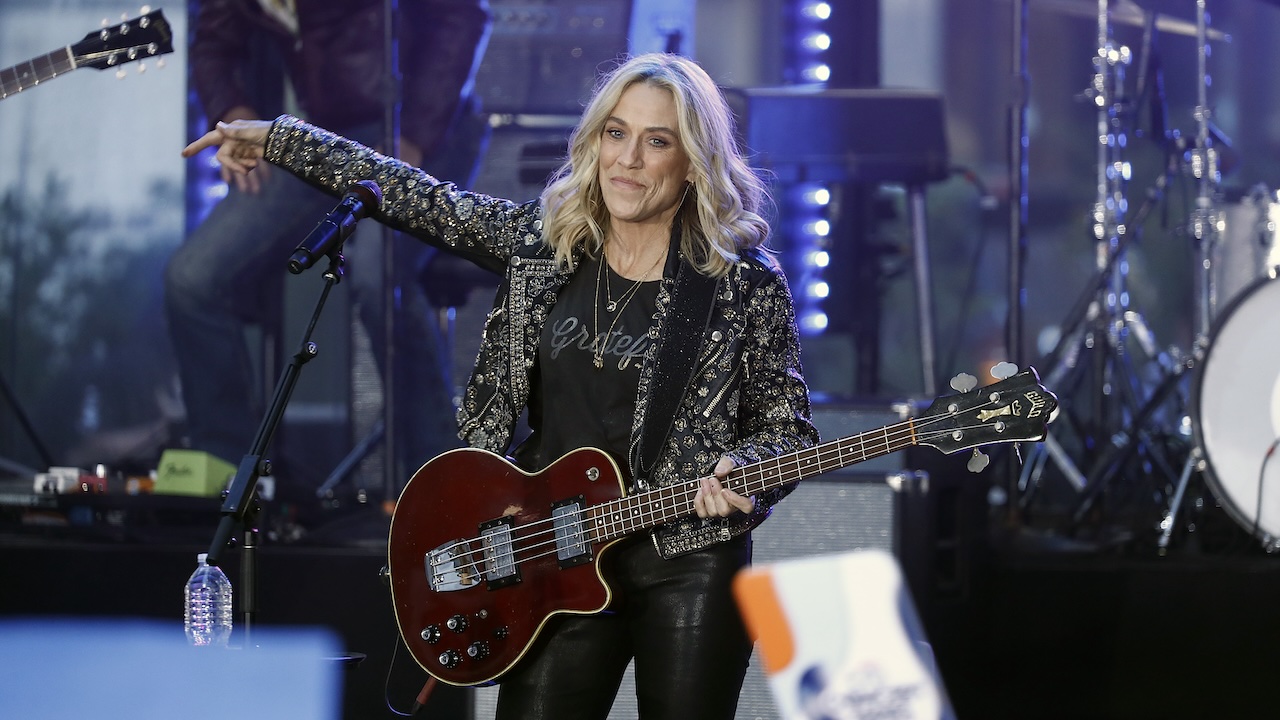Best bass amps 2025: killer low-end amplification options for bassists
Give yourself the gift of thunder with the best bass guitar amps money can buy – featuring Trace Elliot, Hartke, Ampeg and more
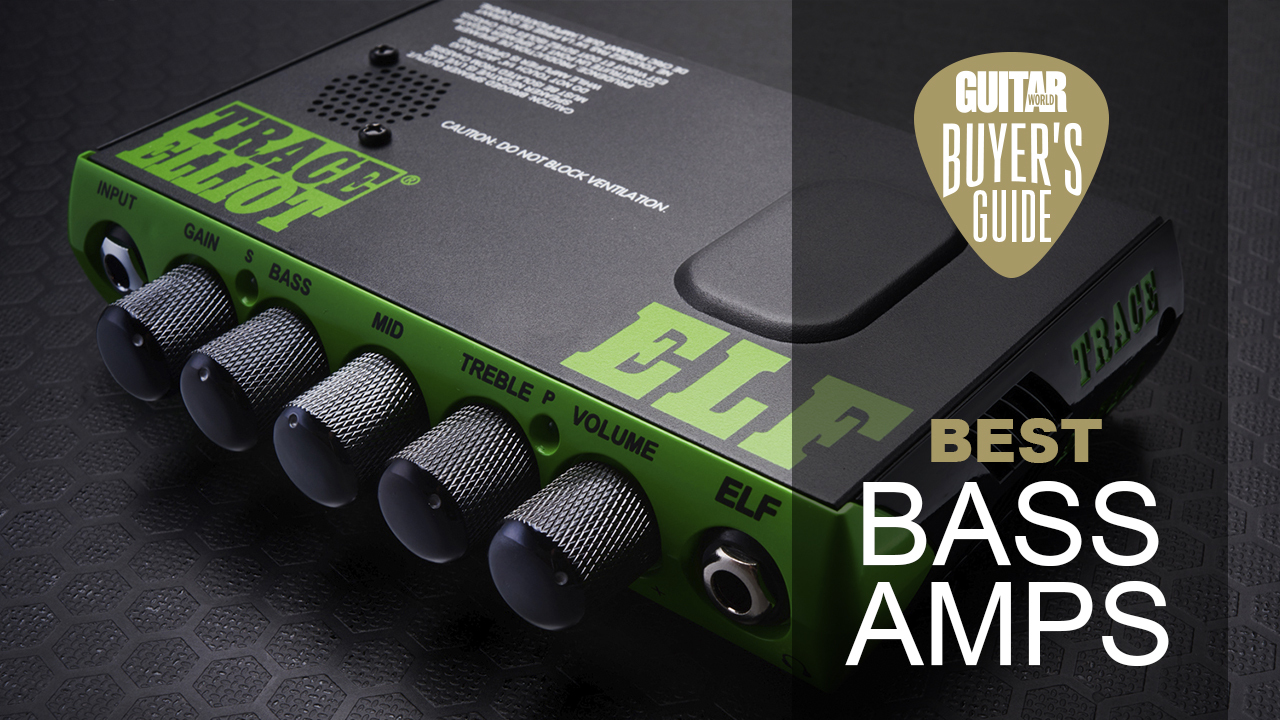
With an ever-growing market, securing the best bass amplifier for your needs can be a challenge. As the glue for any great band – be that when gigging or in the studio – the bassist and their trusty rig have long been the backbone of the greatest records, so ensuring your amp can deliver is of paramount importance.
Our list of the best bass amplifiers features something for everyone, from top-end, all-tube behemoths, to feisty micro heads you can easily throw in your rucksack. While these units may cover all aspects of the bass amp spectrum, at various prices, the one thing they all have in common is their ability to deliver bucketloads of low-down tone.
We can safely say, whatever you want from your tone – be it an elastic bounce for funk or pure bass-heavy thunder – there’s an amplifier in this guide that will make it happen.
On the hunt for guitar gear savings this Black Friday? Shop our handpicked selection of the best Black Friday guitar deals.
Best bass amps: Quick list
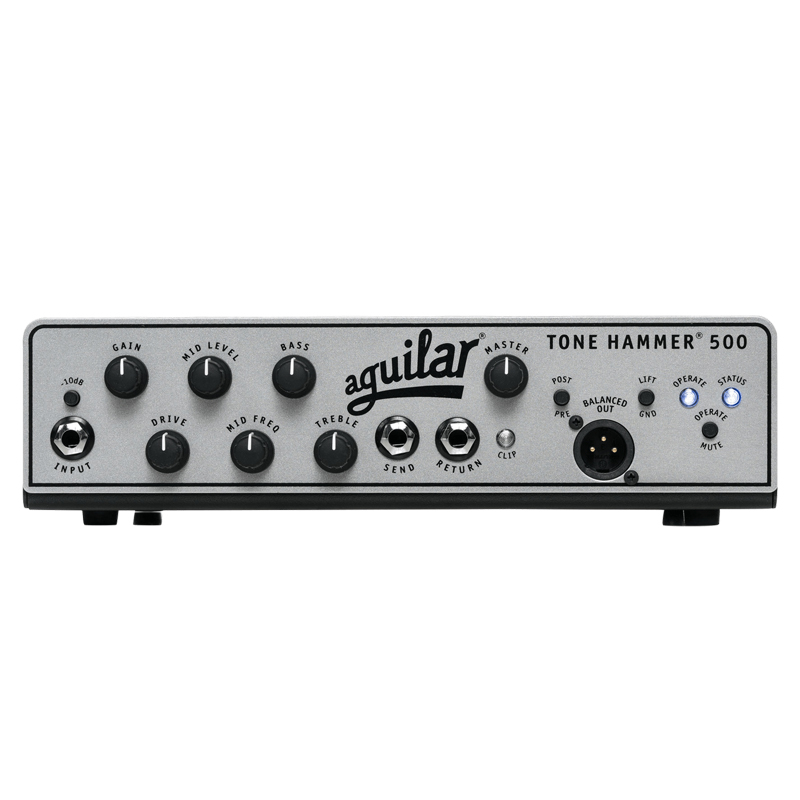
The Tone Hammer is an exceptional solid-state head that offers you phenomenal control over your tone. There are so many usable tones to be found here that you're sure to find a sweet spot no matter what bass you’re using – a street lamp with a fridge magnet pickup would sound usable through this.
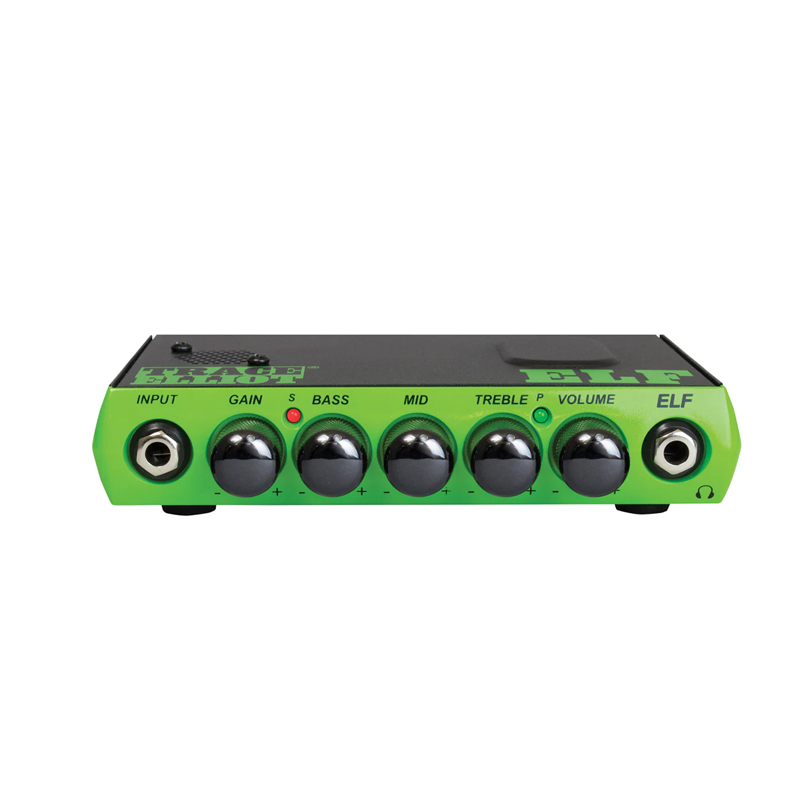
To give you an idea of scale, the ELF is just 0.4” wider than the iPhone 14 Pro Max and is less than one-and-a-half inches tall. You could fit it in your pocket and you might want to because you won’t want to be without it. But don’t let the portability aspect seem like a gimmick. This will work just as well in the studio and ships with REAPER DAW, and Peavey ReValver amp modeling software.
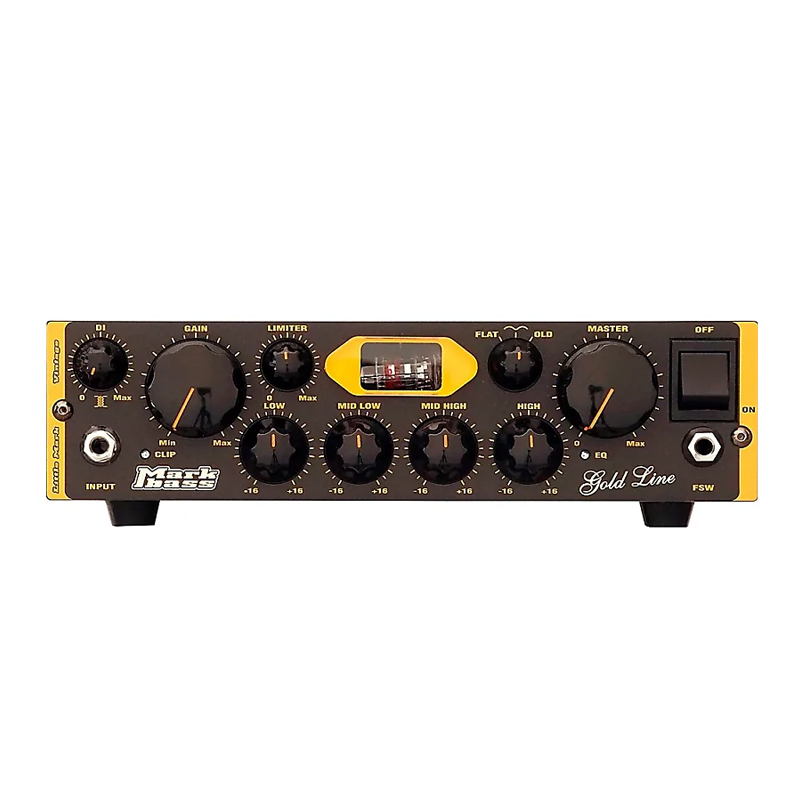
Markbass is well known for cramming bags of tone into tiny packages but getting fully-fledged tube warmth in a unit that’s only 11” wide is one of their biggest successes yet. With a vacuum tube preamp section and class D power section, the Little Mark Vintage combines the best of bass amp technology to deliver a warm, classic tone, with bags of volume in a compact and modern head.
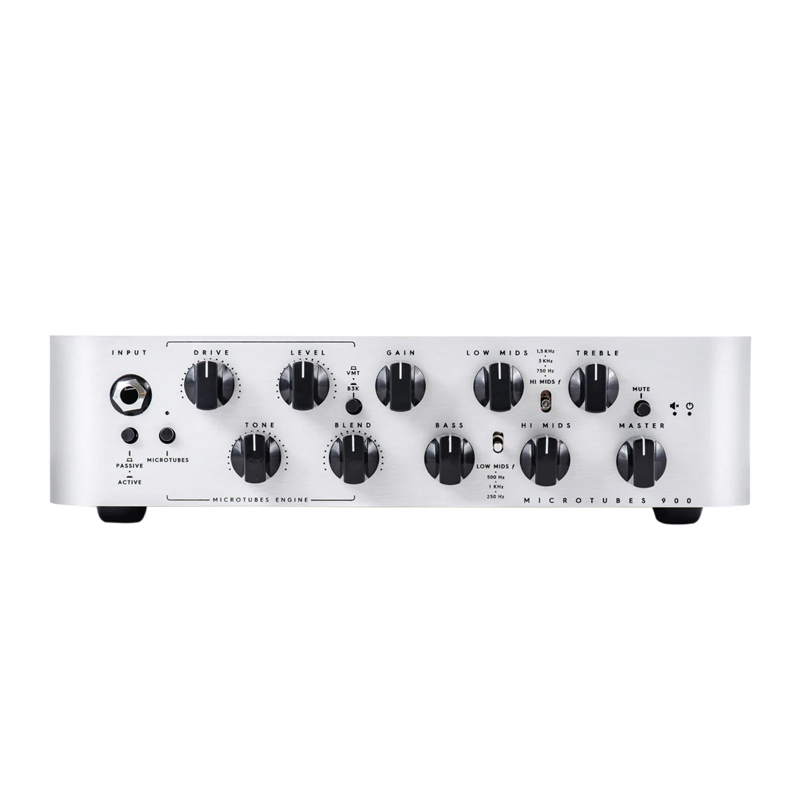
Where to start with the bass amp that can do everything except drive the tour bus? Let’s start with the 6-band EQ: set it flat and report a wholly transparent performance, not unlike a top-line acoustic amplifier. A small adjustment of any one of the six EQ parameters delivers a profound effect to your tone. With this, allied to an onboard compression that has its own control (a simple clockwise turn for more, anticlockwise for less), you’ve got everything you need.
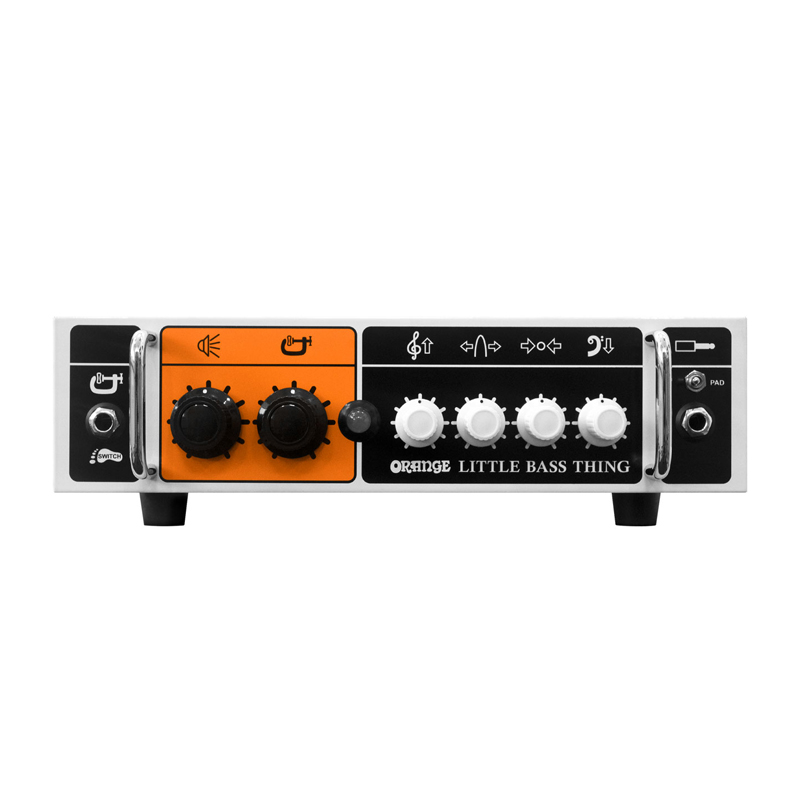
The Orange Little Bass Thing is an excellent example of a fine Orange bass head. It has a tonal power that could give you a black eye and has a stage-ready voice that's perfectly attuned to the needs of the contemporary rocker. Sure, there is a tendency for it to show a little teeth and that might be too much for some players, but as long as you’re not looking for pristine cleans at block-leveling volume, there's a lot to love here.
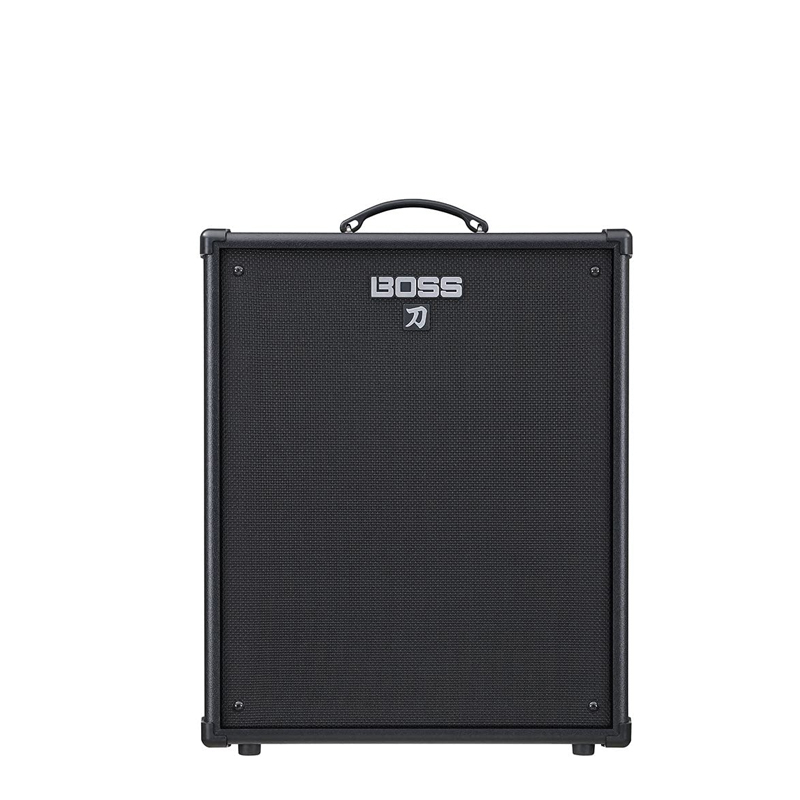
As has come to be expected from the Katana name, Boss has delivered a bass amplifier packed to the brim with features, including three different amp settings – Vintage, Flat and Modern – giving you tonal options from jazzy to metal at the flick of a switch. Drive and compression are always nice additions to a bass amp, but Boss has gone two steps further giving the user the ability to add another pair of effects of your choice from their superb library.
Best head overall
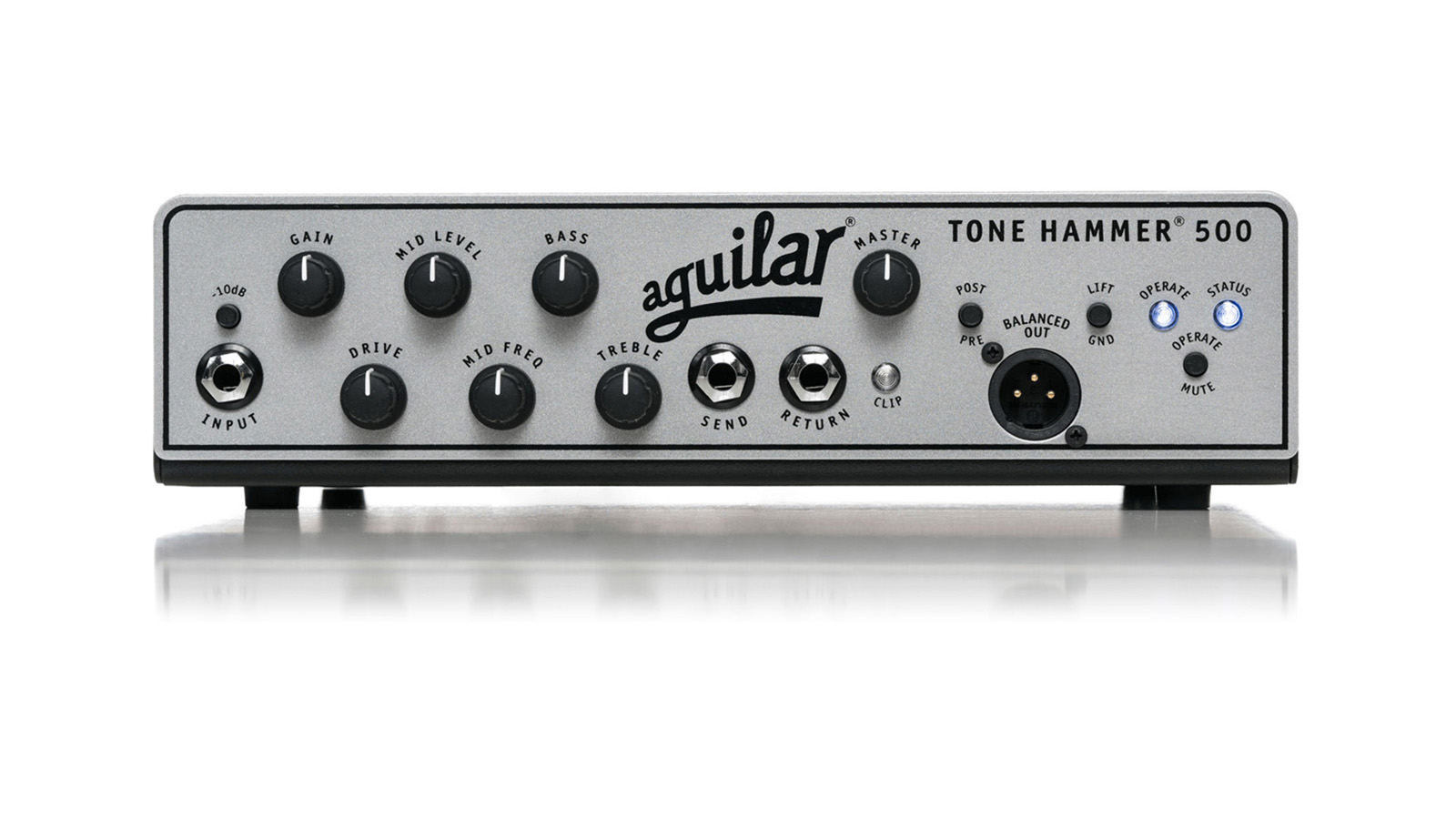
1. Aguilar Tone Hammer 500
Our expert review:
Specifications
Reasons to buy
Reasons to avoid
✅ Buy if you want a versatile amp for gigs: This amp is insanely versatile and very powerful, making it ideal for stage use.
❌ Avoid for home practice: This amp is very loud and does not include a headphone out, so it isn't great for home practice.
The Tone Hammer is an exceptional solid-state head that offers you phenomenal control over your tone. There are so many usable tones to be found here that you're sure to find a sweet spot no matter what bass you’re using – a street lamp with a fridge magnet pickup would sound usable through this.
The treble control allows for a healthy 14dB of boost or cut at 4kHz, the bass a hefty 17dB at 40Hz, while you can park your mids anywhere between 180Hz and 1kHz and boost or cut by 16dB either way.
The drive control interacts with the gain structure and EQ, offering a vintage-sounding EQ that rounds out the bottom end as you turn up the gain and takes off some highs. Aguilar encourages you to use those drive, gain and mids controls as base camp for tone exploration.
Best on a budget
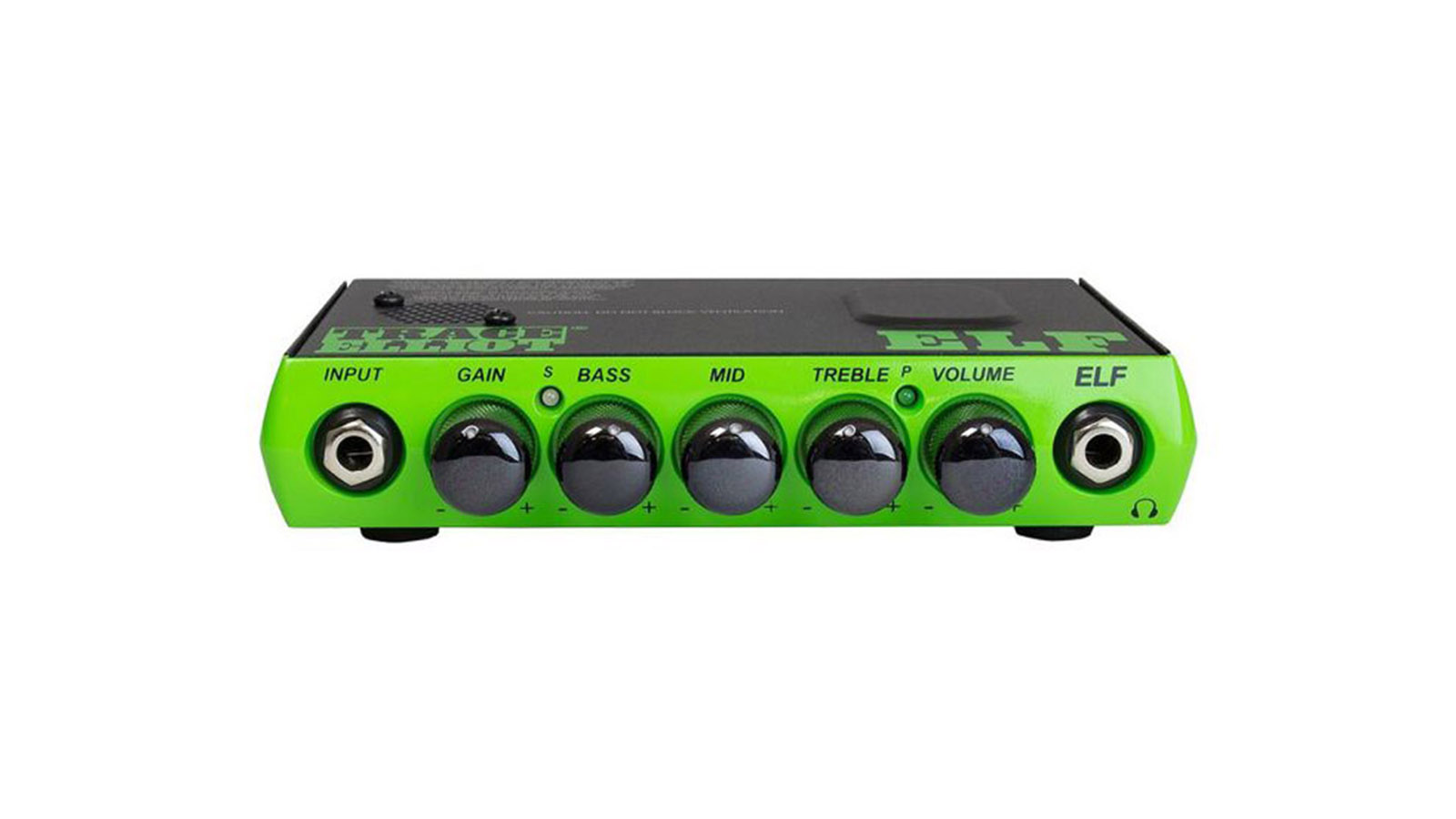
2. Trace Elliot ELF
Our expert review:
Specifications
Reasons to buy
Reasons to avoid
✅ Buy if you want a portable option: This amp is small and lightweight making it perfect for carrying around to rehearsals and gigs.
❌ Avoid if you want more features: This amp is a little on the basic side. So if you want more modern features, you'll need to look elsewhere.
To give you an idea of scale, the ELF is just 0.4” wider than the iPhone 14 Pro Max and is less than one-and-a-half inches tall. You could fit it in your pocket and you might want to because you won’t want to be without it.
The performance is exceptional, with a respectable 200-watts at 4 ohms and all the essential features you need. The 3-band EQ plays the percentages and parks the lows at 80Hz, mids at 500Hz, and highs at 4.2kHz, all very sensible and all very usable. There’s also an XLR out for going straight to the PA.
But don’t let the portability aspect seem like a gimmick. This will work just as well in the studio and ships with REAPER DAW, and Peavey ReValver amp modeling software - plus there’s a headphones jack for silent practice.
Best hybrid head
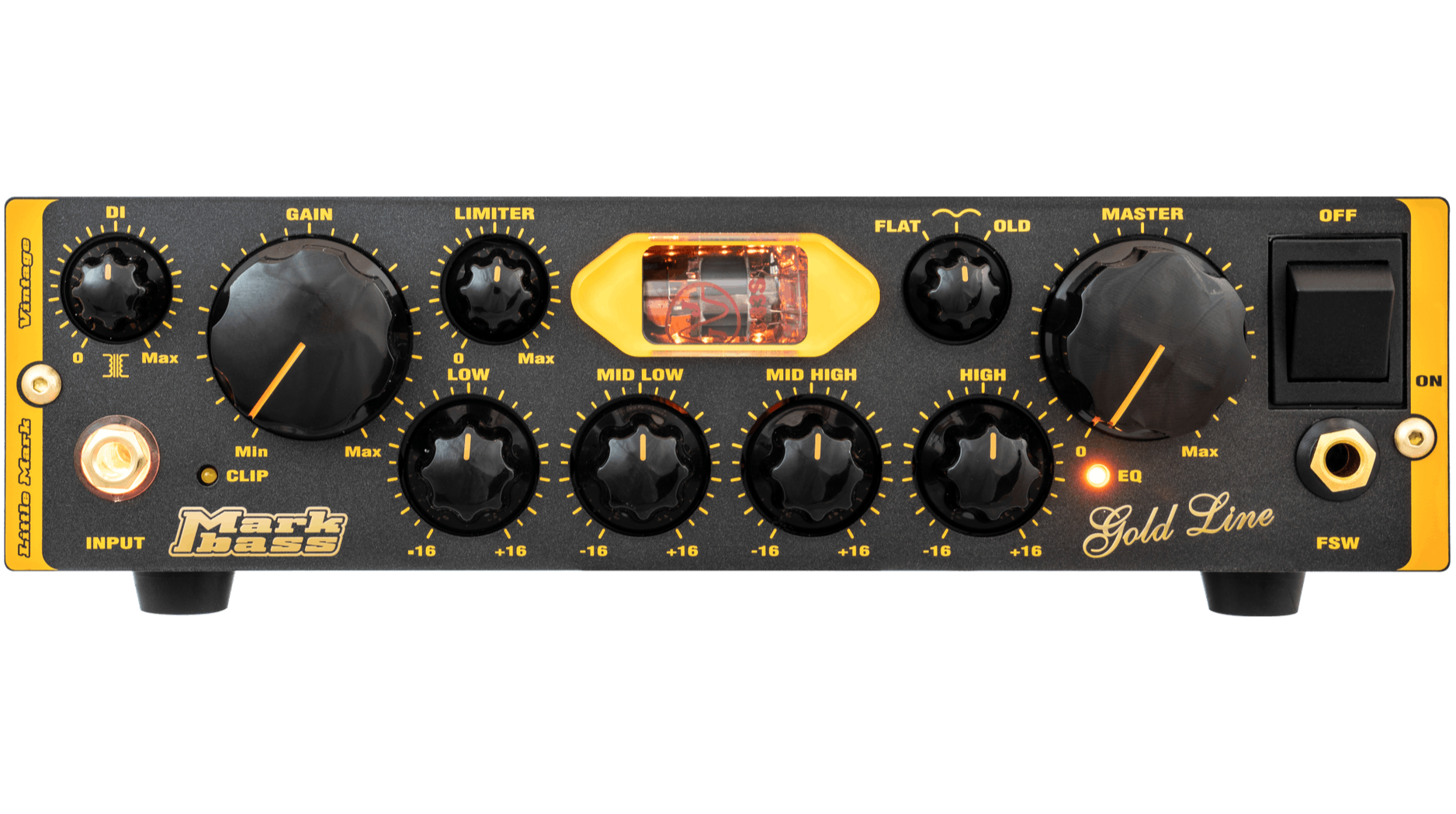
3. Markbass Little Mark Vintage 500W
Our expert review:
Specifications
Reasons to buy
Reasons to avoid
✅ Buy if you want valve tones: This bass amp delivers warm and rich tones that we absolutely love.
❌ Avoid if you need less power: At 500W this is a very loud and powerful head. If that is too much for your solution, you may want to try a different model.
Markbass is well known for cramming bags of tone into tiny packages but getting fully-fledged tube warmth in a unit that’s only 11” wide is one of their biggest successes yet.
With a vacuum tube preamp section and class D power section, the Little Mark Vintage combines the best of bass amp technology to deliver a warm, classic tone, with bags of volume in a compact and modern head.
A 4-band EQ gives plenty of tonal shaping options, particularly in the midrange, where the split controls mean you can easily adjust those tricky mid-frequencies to your needs, whilst a separate ‘FLAT’, ‘CUT’ and ‘OLD’ knob, gives ready-tuned options for super-fast switching.
The built-in limiter is a nice touch and can be balanced with the gain control to produce warm, vintage drive, or slammed to produce more modern tones. With an effects loop and a switchable pre/post-EQ DI output, this is a pretty complete option for the gigging bassist.
Best for modern tones
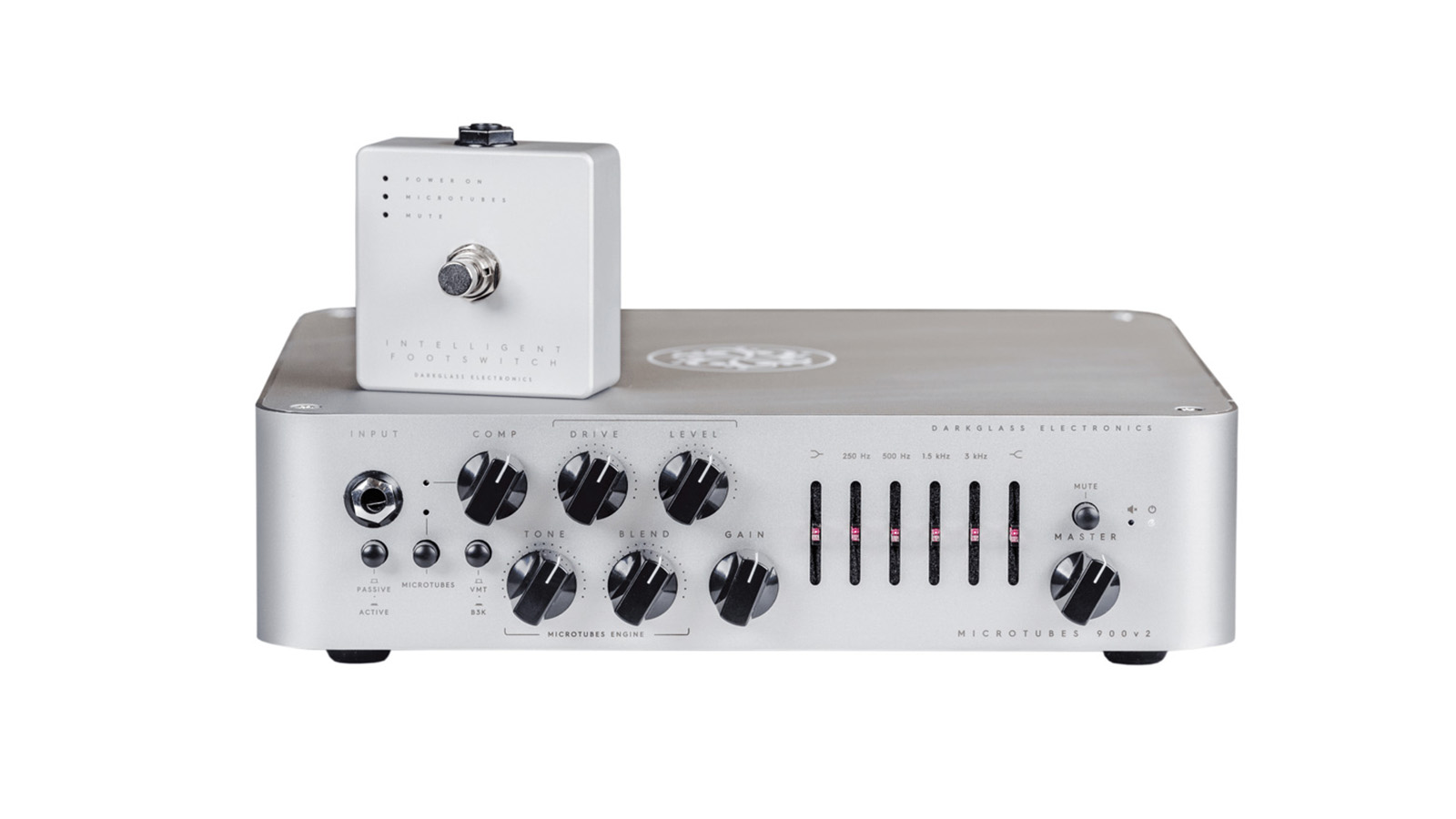
4. Darkglass Microtubes 900 v2
Our expert review:
Specifications
Reasons to buy
Reasons to avoid
✅ Buy if you want great overdrive tones: This contemporary bass amp offers outstanding overdrive tones for rock and metal players.
❌ Avoid if you are on a budget: An amp this good is going to come with a hefty price tag. So, if you're on a budget, you'll need to seek out an alternative.
Where to start with the bass amp that can do everything except drive the tour bus? Let’s start with the 6-band EQ: set it flat and report a wholly transparent performance, not unlike a top-line acoustic amplifier. A small adjustment of any one of the six EQ parameters delivers a profound effect to your tone. With this, allied to an onboard compression that has its own control (a simple clockwise turn for more, anticlockwise for less), you’ve got everything you need.
Then you’ve got the Microtubes Engine section of the 900, and that really spoils you with controls for drive, level, tone and blend to further eek out the full range of your instrument’s voice.
The overdrive on this amplifier is exceptional too, with two voicings – the modern, pugilistic B3K and the vintage VMT – selectable via a switch, with a coloured LED to let you know which is engaged. This is a top-line, professional bass head with all mod-cons in the back making it ideal for stage or studio.
Best for rock tones
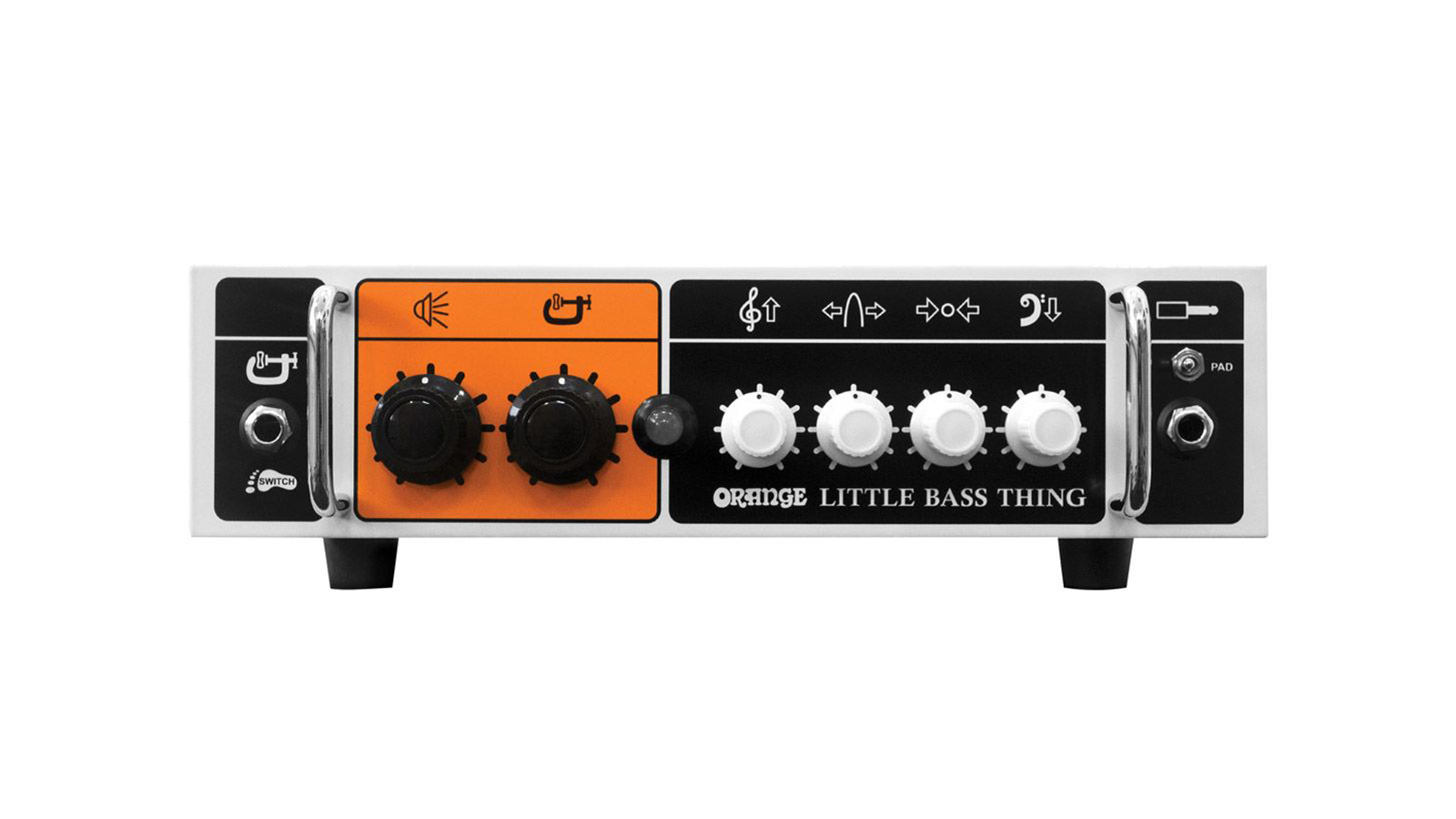
Specifications
Reasons to buy
Reasons to avoid
✅ Buy if you want a hard-rock bass amp: This amp more than delivers those gritty rock tones.
❌ Avoid if you need headroom: This amp doesn't have a great deal of headroom. So isn't ideal for loud clean tones.
The Orange Little Bass Thing is an excellent example of a fine Orange bass head. It has a tonal power that could give you a black eye and has a stage-ready voice that's perfectly attuned to the needs of the contemporary rocker.
Sure, there is a tendency for it to show a little teeth and that might be too much for some players, but as long as you’re not looking for pristine cleans at block-leveling volume, there's a lot to love here. Besides, the -6dB pad does a reasonable job of cleaning things up otherwise.
Once you decipher the controls, you’ll find this a very intuitive, plug-in-and-play head. There are no great mysteries but plenty of sweep in a 3-band EQ that can apply 15dB of cut and boost to the bass, middle and treble, and the onboard compressor is excellent at tightening your tone up.
Read the full Orange Little Bass Thing review
Best for effects
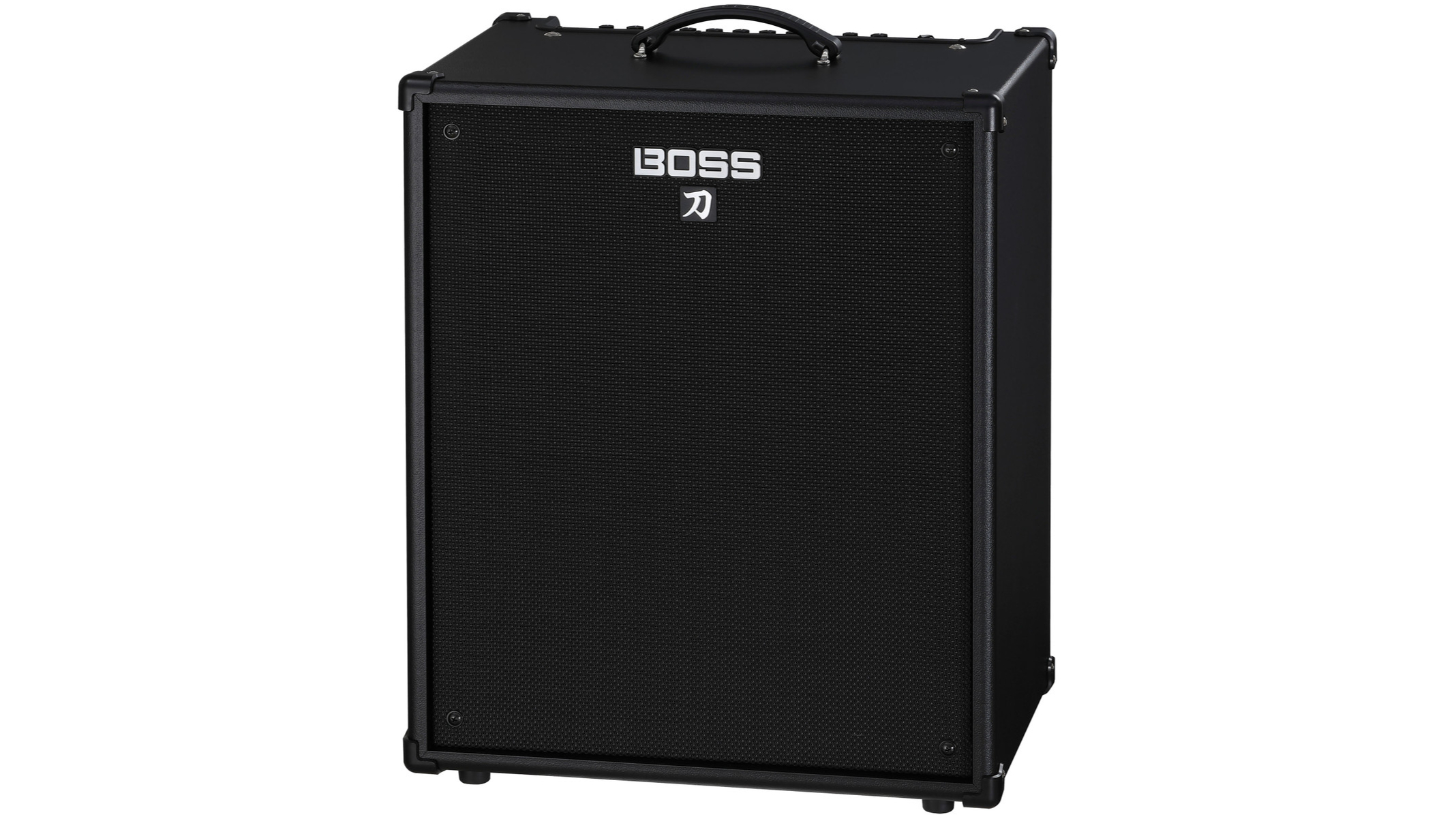
6. Boss Katana KTN210B
Our expert review:
Specifications
Reasons to buy
Reasons to avoid
✅ Buy if you want effects: Boss are industry leaders when it comes to effects and the Katana KTN210B bass amp proves it.
❌ Avoid if aren't fussed about effects: Like to keep your tone simple? Well, if you aren't going to use the effects, there are better options out there.
As has come to be expected from the Katana name, Boss has delivered a bass amplifier packed to the brim with features, including three different amp settings – Vintage, Flat and Modern – giving you tonal options from jazzy to metal at the flick of a switch.
Drive and compression are always nice additions to a bass amp, but Boss has gone two steps further giving the user the ability to add another pair of effects of your choice from their superb library. Expect to find vintage choruses, swelling flangers, and gut-busting octave effects among many more.
The two 10” speakers shift plenty of air but retain enough pop to cut through a mix nicely, making this a serious option for gigging. As with all Katana amps, it’s more than capable of working as a home practice amp too, with a switch taking it all the way down from 160-watts to 1-watt, allowing you to comfortably use this in the bedroom, without aggravating the neighbours.
More options...
So those are our top picks, but there are may more great options to choose from that offer something a little different in terms of features and performance. We've selected some more of our favorites below.
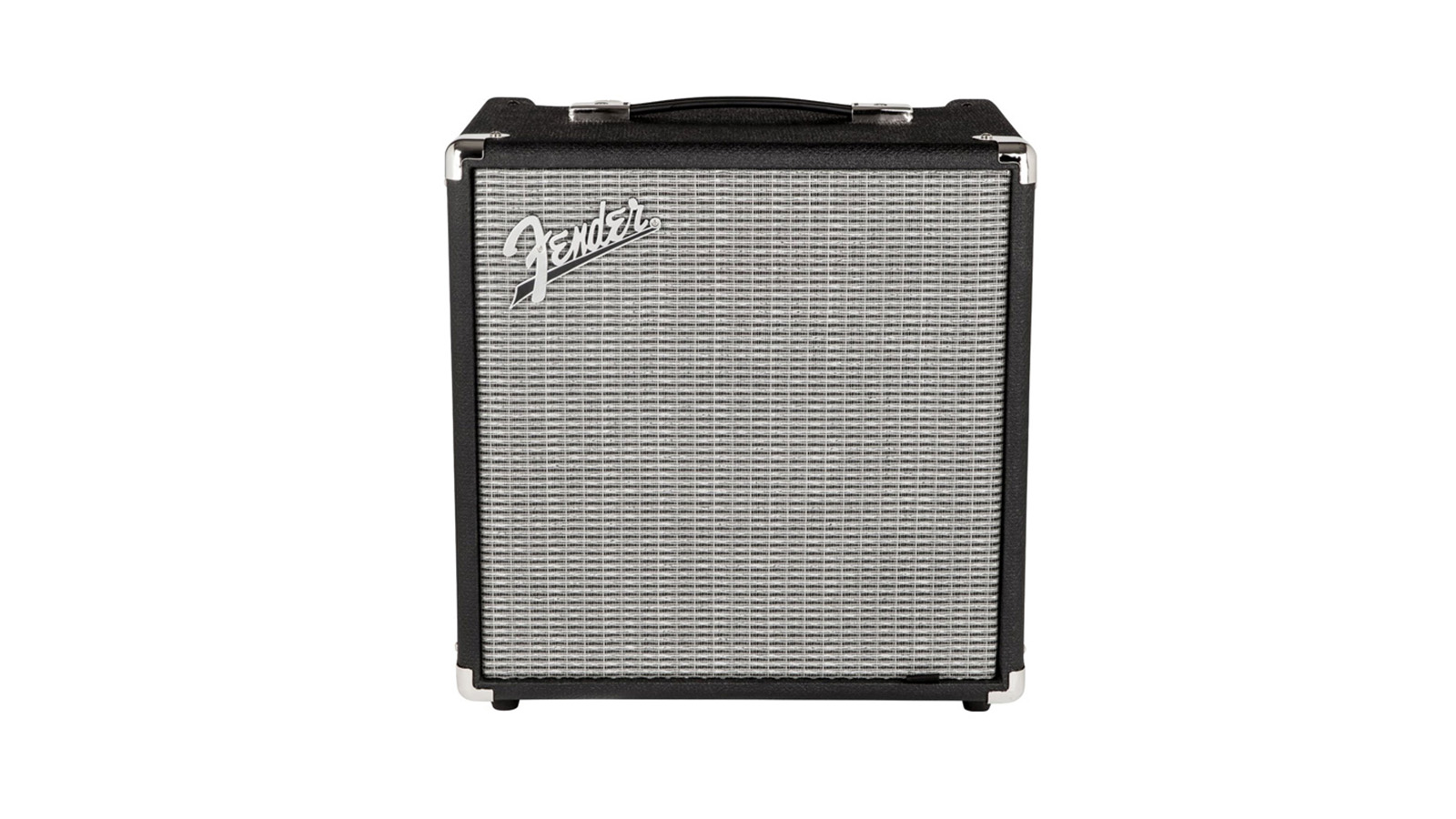
7. Fender Rumble 100 v3
Our expert review:
Specifications
Reasons to buy
Reasons to avoid
✅ Buy if you are looking for a well-priced option: This Fender bass amp offers superb value for money and a pretty classic tone, too.
❌ Avoid if you need more power: At only 100 watts, this is far from the loudest amp on this list. So, if you need more power, you'll want to check out the rest of the Rumble range.
If you're looking for a bass combo, reasonably priced, reasonably spec’d, that doesn’t feel like you’re carting the Undertaker’s fridge around with you, the relatively compact 1x12 Rumble 100 should see you right.
It’s got the classic Fender styling, the black vinyl on a ported plywood cabinet and the silver grille cloth, with a well-designed control panel on the top of the amplifier featuring controls for gain, drive, level, bass, low-mid, high-mid, treble and master volume.
There’s an overdrive on/off switch that can be accessed via an optional foot-switch for, well, for some dirt at the touch of a button, and Bright, Contour and Vintage switches for changing the amp’s voice. Bright will give you a high-end boost, Contour will scoop the mids (hi, slap bassists), and vintage emulates the dynamics of a tube amp. Pretty neat. The Rumble comes in various formats but for practice and small gigs – and for the money – this is our pick.
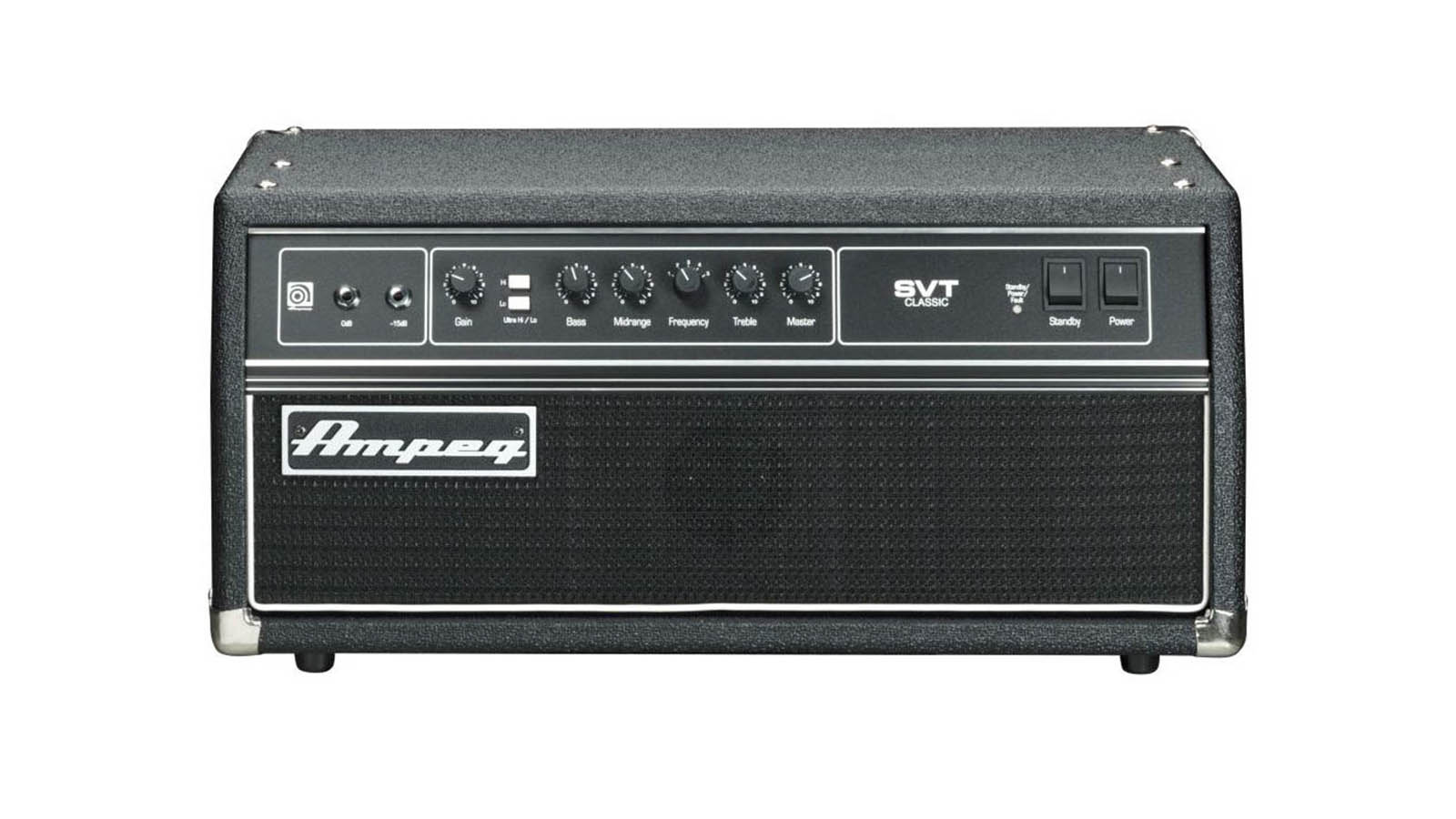
8. Ampeg SVT-CL
Our expert review:
Specifications
Reasons to buy
Reasons to avoid
✅ Buy if you are looking for a classic: The Ampeg SVT is a classic amp for a reason - it sounds incredible!
❌ Avoid if you have a bad back: A full SVT set-up is very heavy. So, if you have back problems, you should avoid this model!
We know that bass amplification is evolving apace but no best bass amps list could be complete without an all-tube head that offers a premium brand of vintage thunder you just can’t get anywhere else.
It’s heavy and it’s expensive, and tubes are tubes which means maintenance at some point down the line, but the tone – primal, primeval, vintage Bootsy Collins, vintage Sting – should strong-arm you into submission.
The controls are sparse but there’s everything you need; a padded -15dB input for active basses, a five-position mids selector and dial, an Ultra High/Ultra Low switch that allows you to boost highs and lows without swamping the respective frequency ranges, 3-band EQ, bias adjustment on the rear. Just plug it in and turn it up.
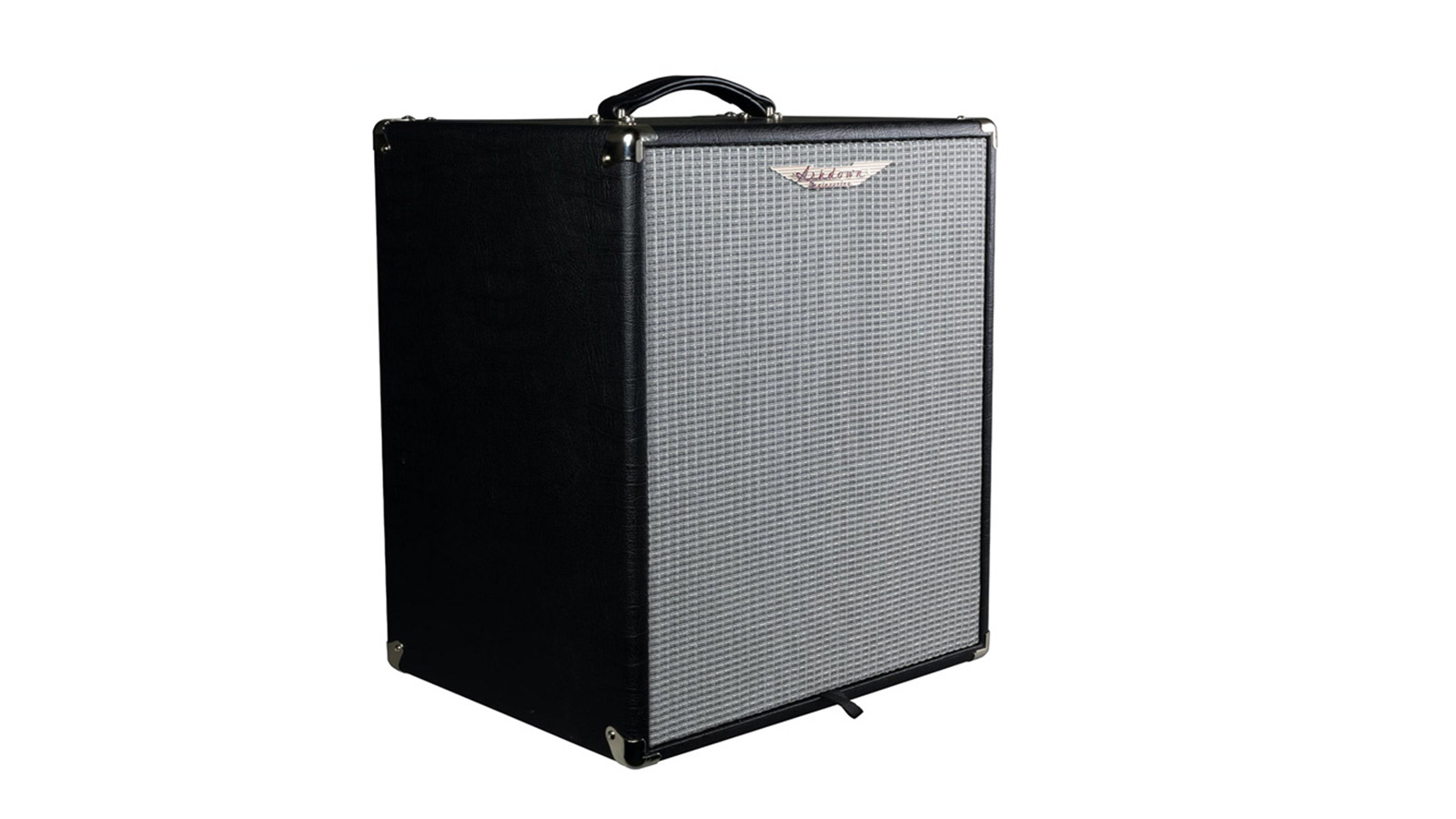
9. Ashdown Studio 15
Our expert review:
Specifications
Reasons to buy
Reasons to avoid
✅ Buy if you need a lightweight combo: At only 24.6lb, this is a fairly lightweight combo with a big sound!
❌ Avoid if you want more features: Yes, this Ashdown sounds great, but it is a little basic.
The Ashdown Studio 15 is the Sam Elliot of bass combos, deep, sonorous, authoritative, and musical in its own right. It’s a lightweight combo, housed in a frame of poplar-ply, which is to say it’s quite heavy but not for a combo.
Like the Rumble, this has a straight-ahead control panel with a pad switch for active basses and a shape switch for a quick, pre-EQ tone fix, effectively changing the voicing of the amp. You’ve got 300 watts to play with and a 5-band EQ that pays special attention to your mids.
All the important stuff is on top, so that balanced XLR out, effects loop, headphones out, foot-switch and line in are all right there in front of you. Speaker-wise, there's a lightweight neodymium speaker and a hi-fi tweeter that you can mute if you’re sick of high frequencies.
Best bass amps: Buying advice
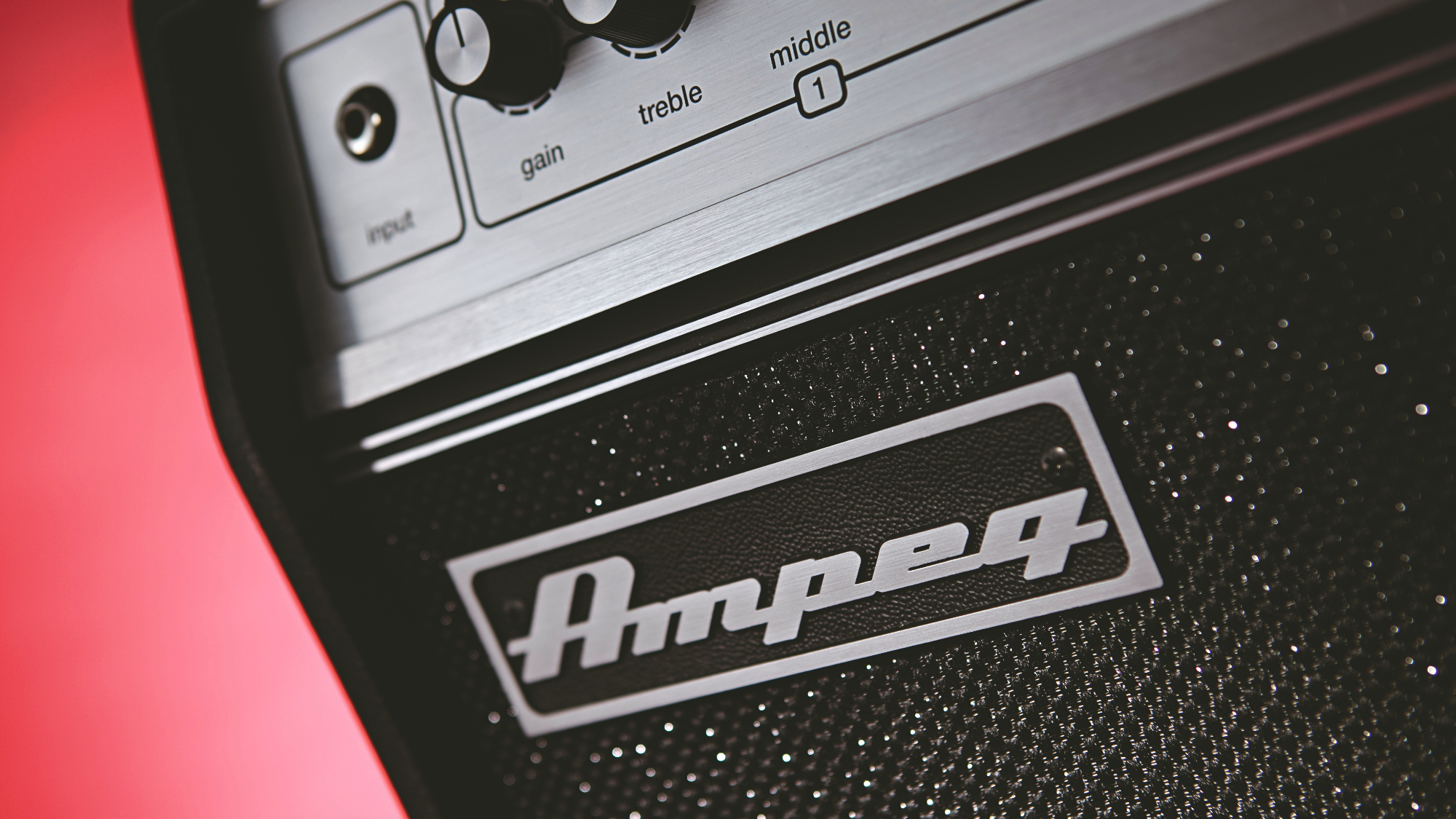
Which is the best bass amp for me?
You can trust Guitar World
With countless options under $500 that can provide gig-worthy volumes, become trusted studio companions, or in many cases both, the bass amplifier market has arguably never been better. But in a saturated market, finding the right one for you can be difficult.
Choosing an amp to fit your needs now and for the future is a smart way to buy. Are you just starting out playing small basement venues and need something that can compete with the drummer, but dream of making the walls shake at bigger gigs? Or are you already touring medium-large sized venues and need to find a reliable partner as you set off on the road?
Setting clear benchmarks for what you need in terms of features, wattage and tone is key to choosing an amp that is going to deliver.
Which features are essential in a bass amp?
All players want a certain level of versatility. Options are great and features present options. But for beginner bass players, it’s crucial you can find tones quickly and concentrate on playing. A control panel that is easily navigable is a big plus – even with a condensed feature set, the bass amplifier will teach you a good lesson in how EQ can alter the character of your bass tone, complementing whatever style you’re playing in.
Having a built-in DI output on a bass amp is really helpful, particularly if your amp isn’t a mammoth, 800W+ powerhouse, as most venues will be able to take a signal out of your amplifier and plug it into their PA system, giving you bags of extra volume, which your amp couldn’t possibly manage on its own. The ability to do this may help you bridge the gap between playing smaller and medium-sized venues, without having to constantly look to upgrade to a more powerful amp.
A tasteful EQ section that can shape your tone to your playing style is a must. Whether you are looking to roll off the top end for those jazzy vibes, or have something more spiky that can cut through a mix in a rock setting, bear in mind that not all amps are built the same and some are masters of specific genres. For example, Darkglass has made a name for themselves as masters of modern-bass-tone, particularly in genres such as metal, so their products may not be a perfect match for groovy jazz players but would be ideal for somebody in a math-rock outfit.
If you’re planning on playing slap-bass, consider amps with built-in compressors, which will work to keep your playing at an even level and add additional spank to your sound. The Boss Katana KTN210B has a great compressor ready to use, with a super easy, 1 knob control - turn clockwise for a tighter, punchy sound. The Katana also offers two other programmable effects slots, which may be something to consider if you want to go for a bass rig without using an additional pedalboard.
Think of the size of your amp and whether you will have storage for a huge 8x10” speaker tower… or if even a fairly standard 1x15” cabinet might be pushing it. A number of manufacturers, such as Markbass, are now making lightweight, compact speaker cabinets that pack a punch, and twinning them with the likes of the Little Mark Vintage 500W produces quite remarkable power from a small footprint.
For classic vintage tones, tubes are the way to go; though you no longer need to have an all-tube setup, such as the Ampeg SVT Classic - however, it’s still the best in the business if you can handle one. Power amp tubes are notoriously temperamental and the last thing you want is your amp to go bang just before a big show, so a hybrid system with a tube preamp and class D power section could be the perfect solution, offering warm tube tones, in a smaller, more reliable package.
Check the connections when looking to buy an amp, as many smaller amps, such as the Trace Elliot ELF, are brilliant at what they do, but their sheer size - or lack thereof - means they have to forego some much-desired inputs/outputs, such as auxiliary in. If you are considering buying a combo, do you want the ability to add an external speaker? Not all combos have this functionality, so that’s important to bear in mind.
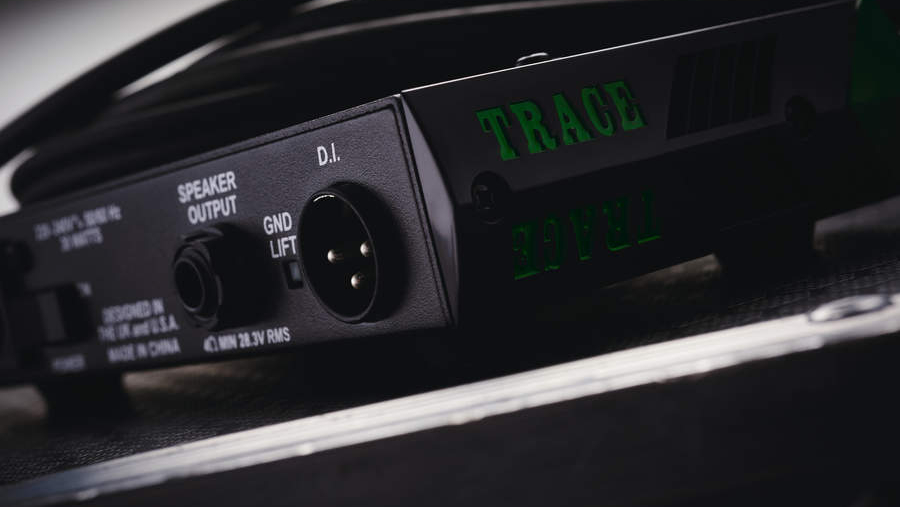
What are the best bass amp brands?
When looking at the backline of your favorite bands, one brand tends to come up more than others - Ampeg. There’s a good reason for that. With more than 75 years of experience in creating high-power, high-quality tube bass amplification, they have often been the benchmark for others to aspire to. With a signature, sought-after tone, many other brands have tried (and failed) to copy their sound, but the fact of the matter is that nothing quite sounds like an Ampeg.
Though almost certainly better known for their guitar amplifiers, it shouldn’t be forgotten that Fender are a serious player in the bass amp game, with their original Bassman amplifiers being held in the same esteem as the likes of Ampeg’s tube classics. They still make Bassman reissues, which are superb, but their more entry-level Rumble series is perhaps their best bang-for-buck offering. In general, it’s hard to go wrong with Fender products and that’s the same for their bass amps.
The likes of Aguilar, Ashdown and Trace Elliot are stalwarts of the bass world, each with superb reputations and huge lists of notable endorsees, while contemporary brands such as Darkglass have arrived and offer different options, particularly with more modern players in mind.
Every brand offers something a little bit different and more expensive doesn’t always mean better. A great place to start when looking for the best bass amp for you is to research a particular player you love the sound of and discover which brands they used to achieve their iconic sound. After finding that out, you can check to see if that brand has a range that will fit your budget.
How we choose products
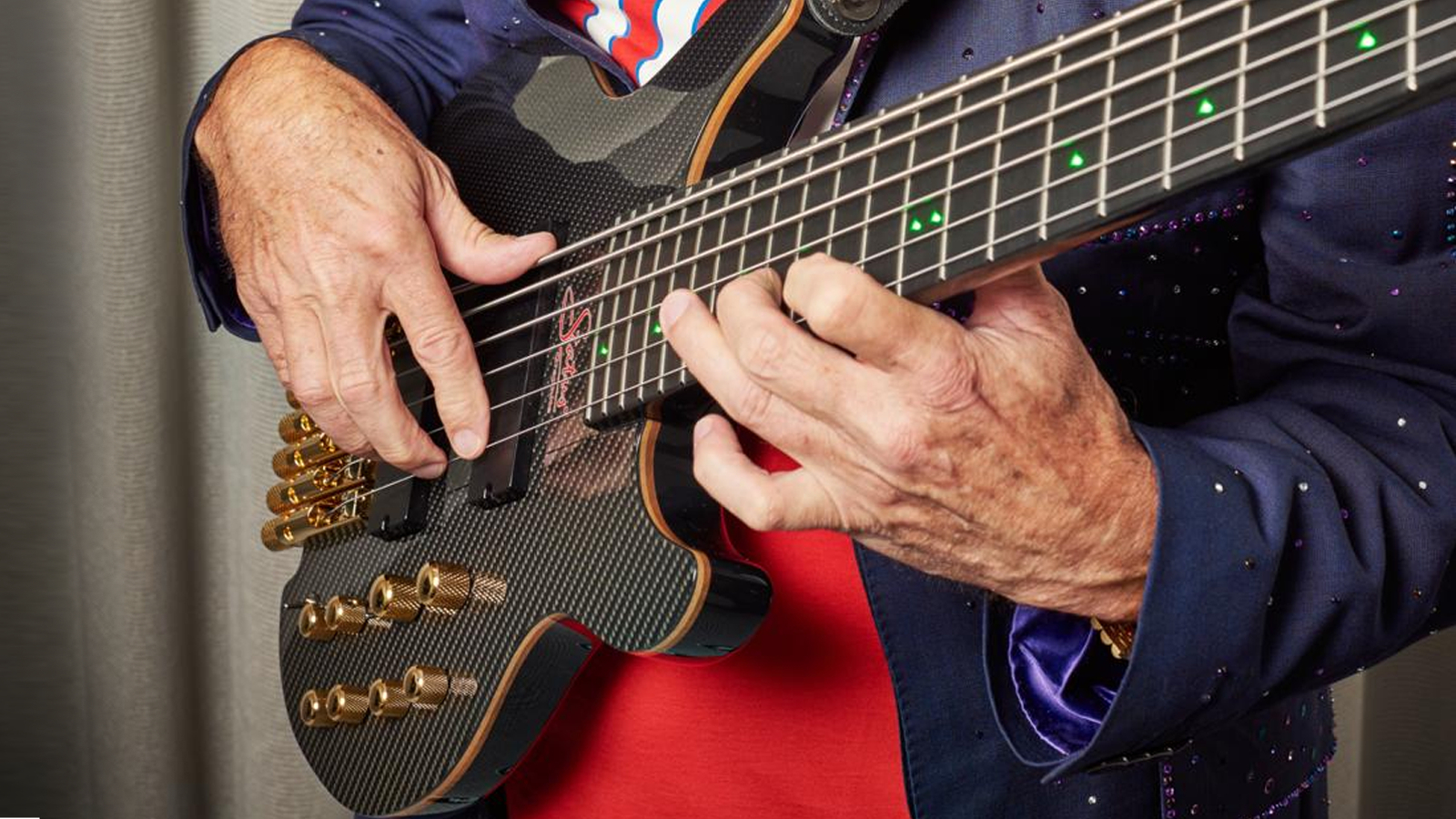
Here at Guitar World, we are experts in our field, with many years of playing and product testing between us. We live and breathe everything guitar and bass-related, and we draw on this knowledge and experience of using products in live, recording and rehearsal scenarios when selecting the products for our guides.
When choosing what we believe to be the best bass amps available right now, we combine our hands-on experience, user reviews and engage in lengthy discussions with our editorial colleagues to reach a consensus about the top products in any given category.
First and foremost, we are musicians, and we want other players to find the right product for them. So, we carefully consider everything from budget to feature set, ease of use, and durability to come up with a list of what we can proudly say are the best bass amps on the market right now.
Read more about our rating system and exactly how we test each product.
Related buyer's guides
- Save cash with one of the best budget bass amps
- Enhance your sound with the best bass effects pedals
- Best basses for metal from Warwick, Schecter, Ibanez and more
- Our pick of the best 5-string bass guitars
- Freshen up with the best bass strings
- Work on your chops with the best bass amps for practice
- Here is our pick of the best gifts for bass players
- Thicken up your low end with the best distortion pedals for bass
- Here are our top picks for the best short-scale basses right now
- Best bass preamp pedals: consistently great tone on the go
All the latest guitar news, interviews, lessons, reviews, deals and more, direct to your inbox!
Jonathan Horsley has been writing about guitars since 2005, playing them since 1990, and regularly contributes to publications including Guitar World, MusicRadar and Total Guitar. He uses Jazz III nylon picks, 10s during the week, 9s at the weekend, and shamefully still struggles with rhythm figure one of Van Halen’s Panama.

